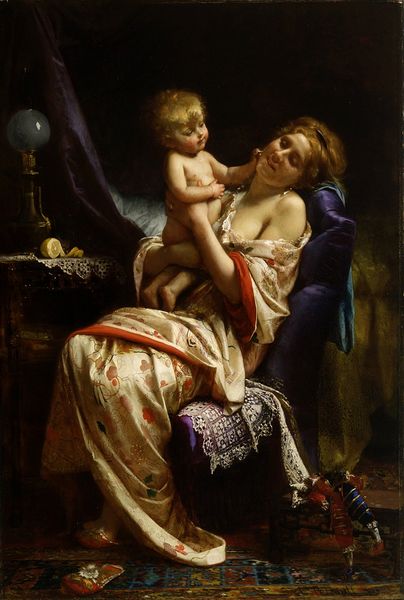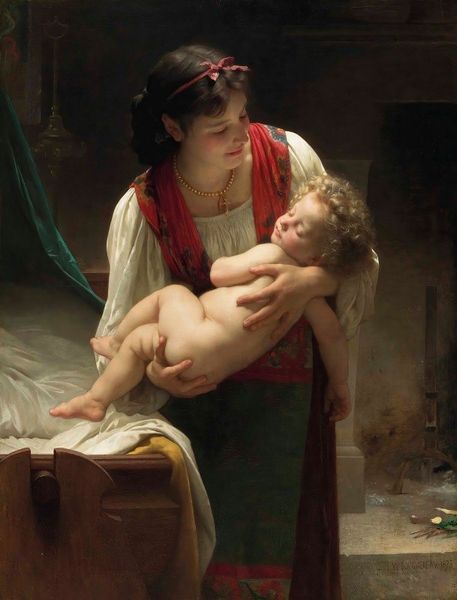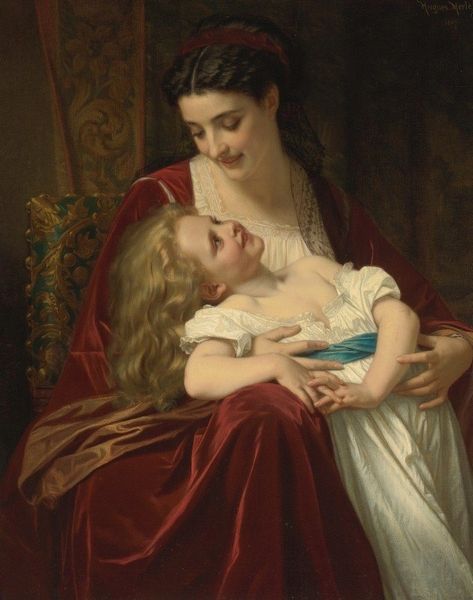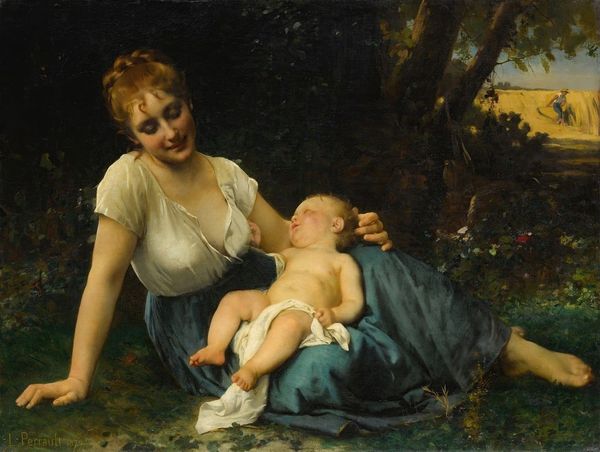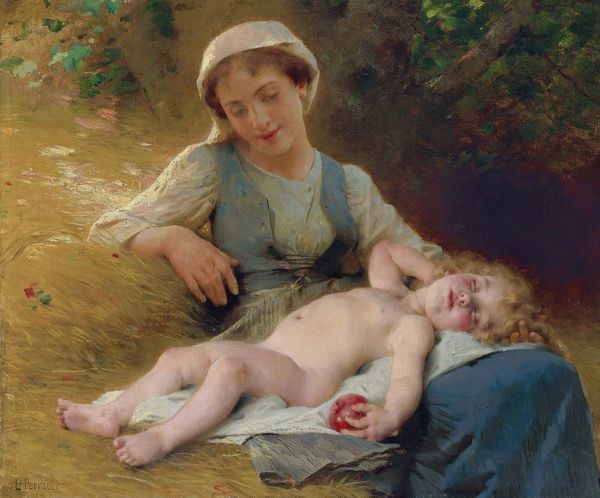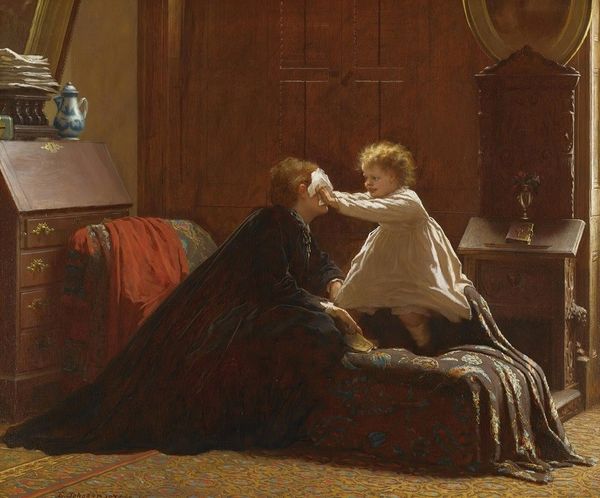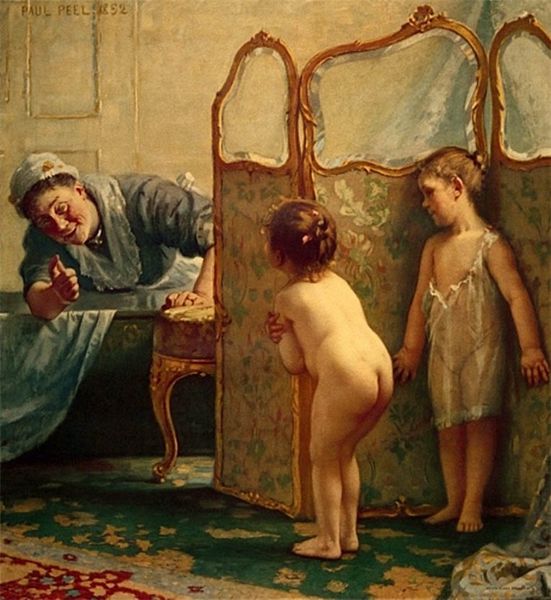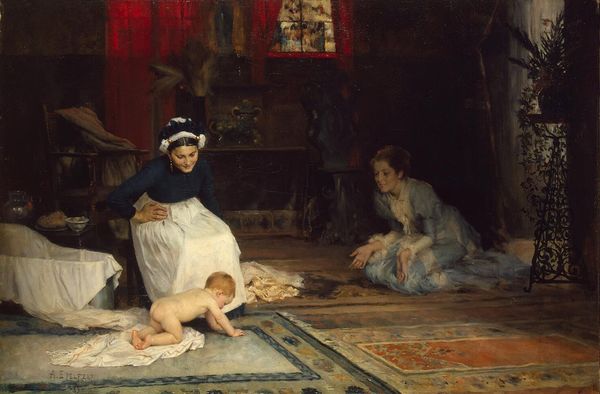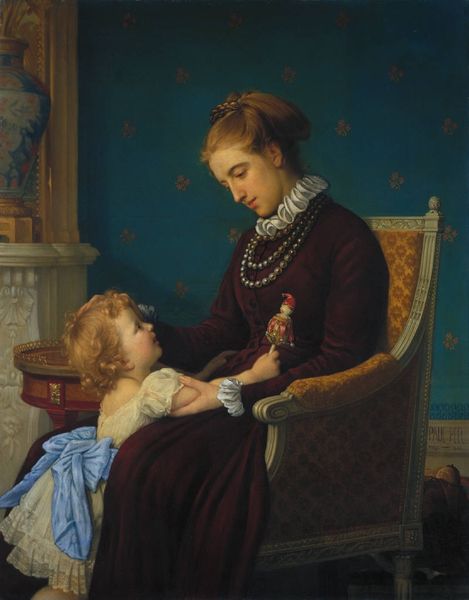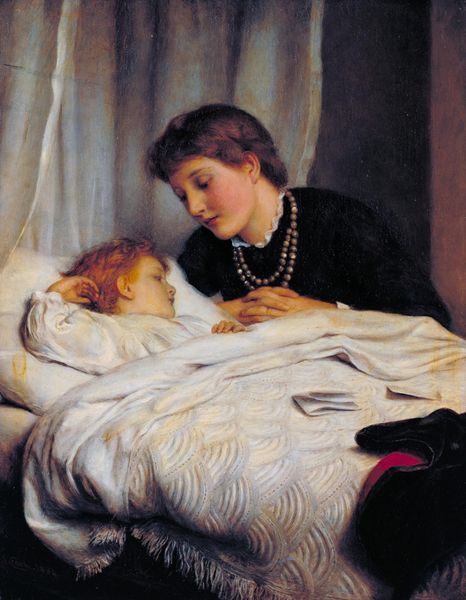
Copyright: Public Domain: Artvee
William Bouguereau painted “Jeune Mère Contemplant Son Enfant” with oils, presenting an intimate scene of motherhood. This was a period in France where traditional values were cherished, and the image of the nurturing mother held significant cultural weight. Bouguereau's work aligns with the academic art tradition, a style promoted by institutions like the French Academy. His paintings often idealized scenes of peasant life and motherhood, reinforcing conservative social norms. But the sentimentality and emotional depth present in “Jeune Mère” also speak to the shifting values of the rising middle class. There is a tension in that while reinforcing the traditional role of women, the painting does give a sense of the psychological weight that comes with this role. Historical context is crucial for interpreting this painting fully. Examining the socio-economic conditions of 19th-century France, along with the role of institutions like the Academy, allows us to understand the painting's meaning and impact. By researching the social, political and cultural contexts of such a painting we can see the push and pull between changing social norms.
Comments
No comments
Be the first to comment and join the conversation on the ultimate creative platform.
